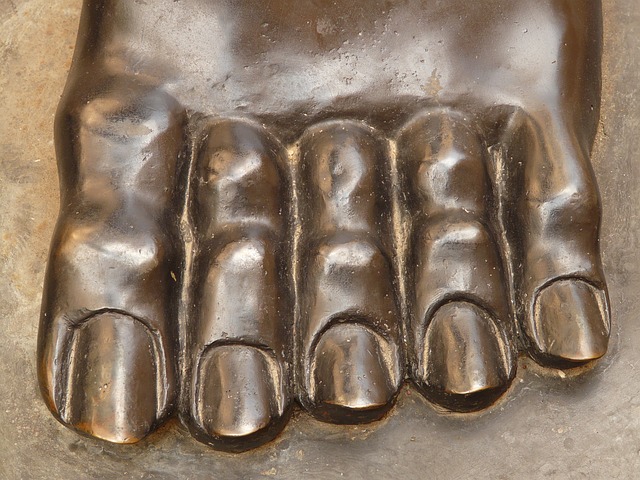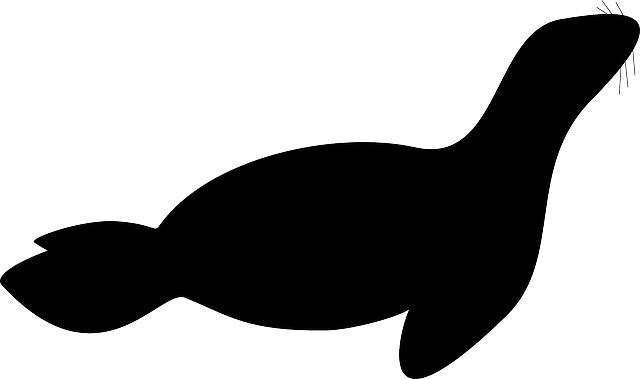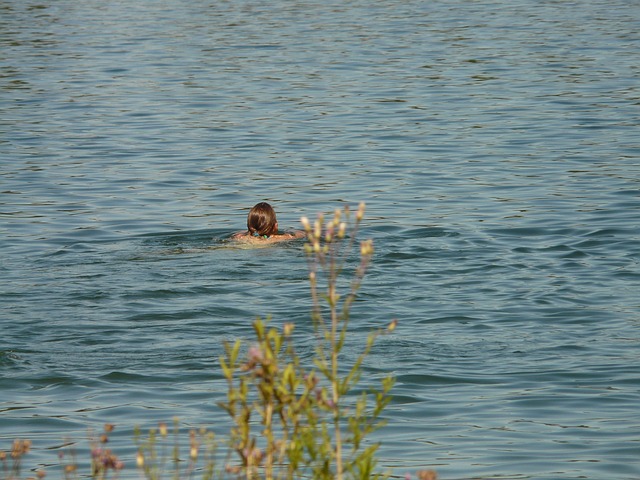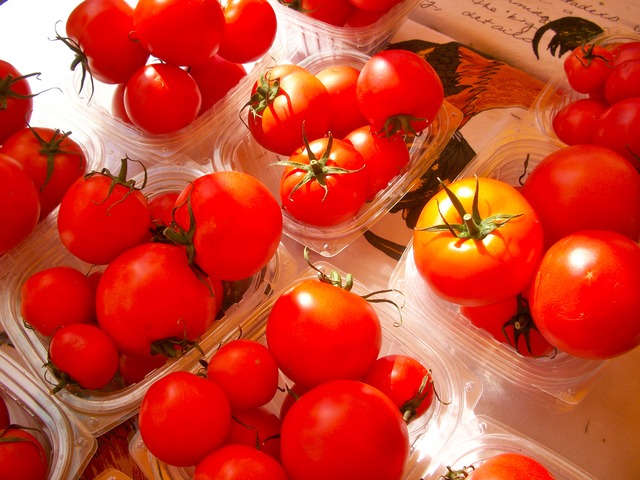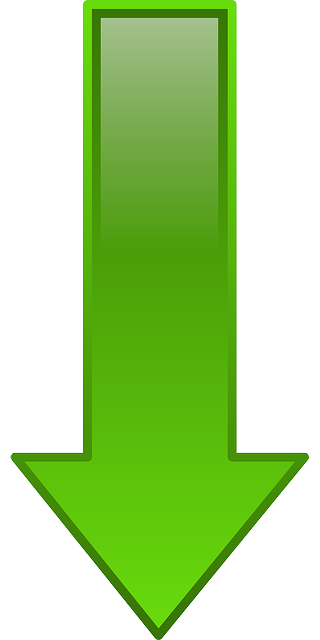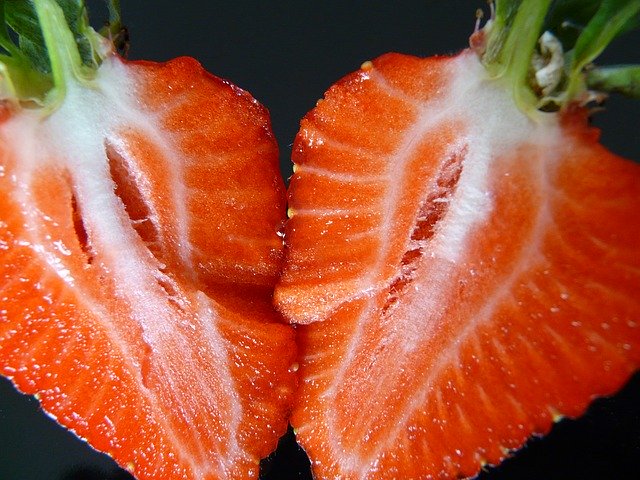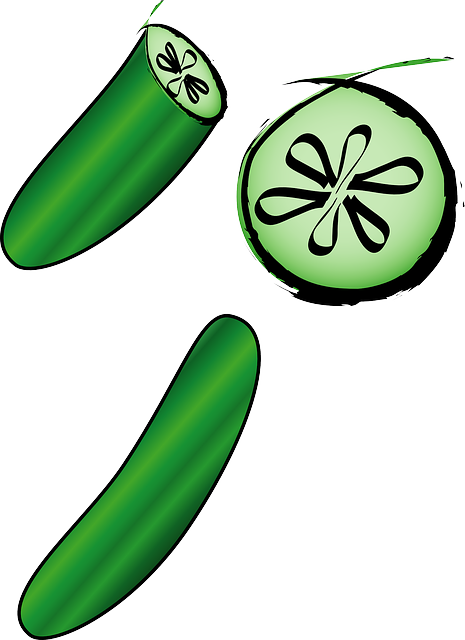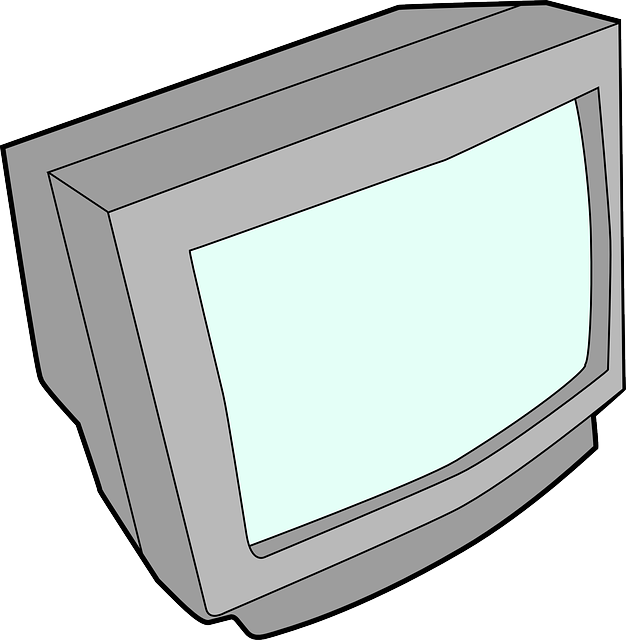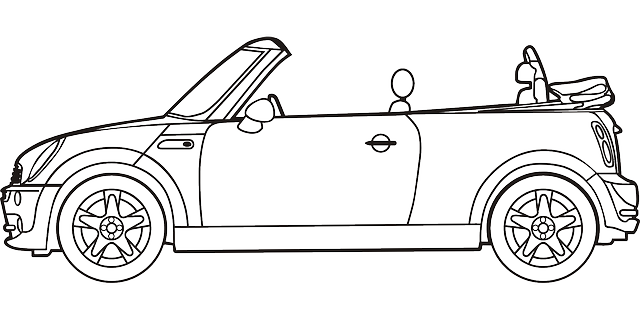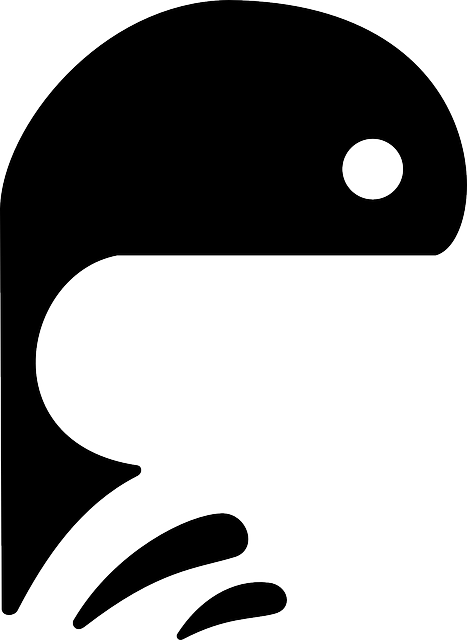ويكيسوريا:Needle free drug delivery
سأقوم بهذا الموضوع بنسخ الفقرات الانكليزية وترجمتها لندقق ما نستطيع من هذا الفصل..
Drug Delivery: Needle-Free Systems Toby King Aradigm Corporation, Hayward, California, U.S.A.
INTRODUCTION Needle-free drug delivery was first proposed as early as the mid-19th century[1] and was demonstrated to work many decades ago with one of the first major patents filed by Lockhart in the 1930s.[2] At first glance, it is a concept both highly attractive and very simple— accelerate a drug formulation (liquid, powder, or depot) so that it penetrates the skin without the requirement for a needle. This avoids a multitude of disadvantages that are inherent in needle use:
� Risk of cross-contamination from needle-stick injury.
� Under- or overdosing resulting in poor injection technique of patients.
� Costs of sharps disposal.
� Needlephobia (up to 15% of people are clinically needle-phobic, and most people are apprehensive about receiving injections).
� Injection site pain.
� Poor compliance leading to long-term worsening of conditions.
� Increased costs due to patients visiting hospitals/ physicians’ offices for injections.
المقدمة INTRODUCTION
اقترح استخدام تقنية إعطاء الدواء دون إبرة لأول مرة بحدود منتصف القرن التاسع عشر[1] وقد أثبتت عملها منذ عقود بداية من أوائل براءات الاختراع الرئيسية المقدمة من قبل شركة Lockhart لوكهارت في الثلاثينيات.[2] بدا للوهلة الأولى كمفهوم جذاب للغاية وبسيط جداً يسرّع وصول هجريبة الدواء (السائل أوالمسحوق أوالمدّخر) بحيث يخترق الجلد دون الحاجة إلى إبرة. وهذا يفيد في تجنب المساؤى المتعددة المتأصلة باستعمال الإبر وهي: • مخاطر التلوث المتصالب جراء الإصابة برأس الإبرة الملوّث.
• نقصان أوزيادة الجرعة الناجم عن سوء استخدام المريض لتقنيات الحقن.
• التكلفة المرتفعة لإتلاف الإبر الحادة.
• رهاب الإبر needle-phobic (حوالي 15 % من الأشخاص لديهم رُهاب من الإبر سريرياً، ومعظم الأشخاص يخافون من تلقّي الحقن).
•الشعور بالألم في مكان الحقن.
• عدم مطاوعة المريض مما يؤدي إلى سوء حالته على المدى البعيد.
• زيادة التكاليف بسبب زيارة السقمى للمستشفيات وعيادات الأطباء لتطبيق الحقن.
تتمة
This article examines the technical and, to a lesser extent, the commercial challenges surrounding the development of a needle-free system and begins by providing an overview of the three broad needle-free technologies: powder injection, depot (or projectile) injection, and liquid injection. Only one technology of note has been commercialized for each of powder and depot injection. Since liquid needle-free injection has been by far the mostly extensively developed, the majority of the chapter will address the technical background of this field, the challenges, and how they have been overcome.
تناقش هذه الموضوعة التحديات التقنية والتجارية -بدرجة أقل- التي تحيط بتطوير جملة الإيتاء دون إبرة الـ needle-free، وتبدأ بإلقاء نظرة عامة حول التقنيات الثلاث الرئيسية للحقن دون إبرة وهي: حقن المساحيق، الحقن المدخرية (أوالقابلة للقذف projectile) وحقن السائل. ولم يصل للاستعمال التجاري سوى تقنية واحدة لكل من حقن المساحيق والحقن المدّخرية. ونظراً لأن تقنية حقن السوائل دون إبرة قد تطورت على نطاق واسع، فسيتناول أغلب هذا الفصل الخلفية التقنية لهذا المجال والتحديات وكيفية التغلب عليها.
SCOPE
The term ‘‘needle-free’’ has been used to describe a very wide array of drug delivery technologies, from those that do not have a needle but use electrophoresis to drive drugs through the skin, to those that use one or more very small needles, but needles nonetheless (often known as microneedle drug delivery). The present summary will cover only those technologies where the drug formulation itself is used to penetrate the skin via its mechanical energy. It will not describe any technology where a needle is used to puncture the skin, even if the needle is not visible to the patient or only the epidermis is punctured, such as mini-needles, microneedles, pen injectors, or autoinjectors. Also excluded are systems that ablate the skin mechanically or otherwise disrupt its chemical or mechanical structure to increase its permeability, such as laser ablation, microdermal ablation, electroporation, or iontophoresis. These are usually referred to as transdermal drug delivery, but can also be described as needle free.
توسعة SCOPE
استخدم مصطلح الـ ‘‘needle-free’’ لوصف مجموعة واسعة جداً من تقنيات إيتاء الدواء، من تلك التي لا تملك إبرة وتستخدم الرحلان الكهربائي electrophoresis لإيصال الدواء عبر الجلد، إلى تلك التي تستخدم واحدة أوأكثر من الإبر الصغيرة جداً، ولكنها رغم ذلك تعتبر عديمة الإبر (يعهد غالباً بتوصيل الدواء بالإبر المجهرية microneedle). ستغطي هذه الموضوعة فقط تقنيات الإعطاء التي تستعمل هجريبة الدواء نفسها لاختراق الجلد عن طريق طاقتها الميكانيكية. ولن تتضمن أية تقنية تُستعمل فيها الإبرة لثقب الجلد، حتى وإن كانت الإبرة غير مرئية للمريض أوأنها تستخدم لثقب البشرة epidermis فقط، كما في الإبر المصغّرة mini-needle أوالإبر المجهريّة microneedle أوأجهزة الحقن على شكل قلم pen injectors أوالمحاقن التلقائية autoinjectors. كما استثنيت أيضاً الأنظمة التي تستأصل (تجتذّ) ablate الجلد ميكانيكياً أوالتي تعطل بنيته الكيميائية أوالميكانيكية لزيادة نفوذيته، كما في الجذَ بالليزر laser ablation وجذّ الأدمة المكروية microdermal ablation أوالتثقيب الكهربائي electroporation أوالرحلان الأيوني iontophoresis. حيث تصنّف هذه الطرق عادةً ضمن طرق إيتاء الدواء بطريق الأدمة ولكن يمكن وصفها أيضاً بالطرق عديمة الإبر needle free.
THE TECHNOLOGY OF NEEDLE-FREE==
INJECTION
==Powder Needle-Free Injection
This technology was originally pioneered by Prof.
Brian Bellhouse of Oxford University, and developed
by PowderJect PLC, and the specific technology is
comprehensively reviewed elsewhere.[3] Recently, the
rights to this technology have been divided by therapeutic
area. Algorx (Fremont, California, U.S.A.) has
the rights to all molecules except vaccines. PowderMed
(Oxford, U.K.), a new spin-off of Chiron Corporation
(Emeryville, California, U.S.A.), has the rights to the
technology for vaccines, with a particular emphasis
on DNA vaccines.
Powder needle-free injection relies on being able to
formulate particles of a sufficient density and accelerating
them to a sufficient velocity that they will penetrate
the skin in large enough numbers to produce a therapeutic
dose. This is a challenging feat of engineering,
especially if it is to be achieved without a notable
supersonic ‘‘boom.’’
تقنية الحقن دون إبرة THE TECHNOLOGY OF NEEDLE-FREE INJECTION
حقن مسحوق دون إبرة Powder Needle-Free Injection
ابتكرت هذه التقنية لأول مرة من قبل البروفيسور براين بيل هاوس Brian Bellhouse من جامعة أكسفورد Oxford University، وطوّرت من قبل شركة PowderJect PLC، وقد استعرضت هذه التقنية بشكل تام في مكان آخر.[3] ومؤخراً تم تقسيم حقوق الملكية في هذا المجال العلاجي بين شركة ألغروكس Algorx (فيرمونت، كاليفورنيا، الولايات المتحدة) فهي تملك حقوق حقن جميع الجزيئات عدا اللقاحات، وبين شركة PowderMed (أوكسفورد، بريطانيا) وهوفرع حديث لمؤسسة شيرون Chiron Corporation (إيميرفيل، كاليفورنيا، الولايات المتحدة) وتملك حقوق تقنية حقن اللقاحات وبالأخص لقاحات الـ DNA. تعتمد تقنية حقن مسحوق دون إبرة على إمكانية صياغة جزيئات ذات كثافة كافية وتسريعها بما يكفي لتخترق الجلد بأعداد كبيرة كافية للوصول إلى جرعة علاجية. يعتبر هذا تحدياً هندسياً صعباً خاصةً إذا تم تصميمه دون "دويّ" فوق صوتي ملحوظ.
تتمة
The developers succeeded by using a power source of compressed helium gas (the speed of sound in helium is about three times greater than in air, so much greater flow speeds are achievable without the complications of becoming supersonic) and using two different ways of formulating the drug. In the first, the drug (pure, or sometimes with excipients) is presented as hard particles of 10–50 mm in diameter, which have a density approximately the same as the crystalline drug. In the second, mostly used for vaccines, the drug is coated onto gold spheres of a few micrometers in diameter. The gold particles act as a vector for the vaccine, penetrating the stratum corneum and then often the cell membrane, to enable the DNA to be taken up in the cell nucleus, for a DNA vaccine.
وقد نجح المطوّرون بذلك عن طريق استخدام مصدر طاقة دافعة من غاز الهليوم المضغوط (تبلغ سرعة الصوت في الهليوم حوالي ثلاثة أضعاف سرعته في الهواء، وبهذا (ا هـ 1209) يتم تحقيق سرعات تدفق أكبر بكثير دون التعقيدات المرافقة لكسر حاجز الصوت) وباستخدام طريقتين مختلفتين لصياغة الدواء. في الحالة الأولى، يحضّر الدواء (نقياً وأحياناً مع سواغات) كجزيئات صلبة بقطر يتراوح بين 10-50 ميكرومتر، ولها كثافة تقارب كثافة الأدوية بحالتها البلورية. في الحالة الثانية والتي تستعمل غالباً للقاحات، يغلّف الدواء على كرات مضىية بقطر بضعة ميكرومترات. تلعب هذه الجزيئات المضىية دور الناقل Vector للقاح، مخترقةً الطبقة القرنية البشرويّة stratum corneum وبعدها غالباً غشاء الخلية لتمكّن نواة الخلية من أخذ الـ DNA، وذلك في حالة لقاح الـ DNA.
تتمة
The drug is stored in a single-dose, disposable, ‘‘cassette,’’ which is aseptically assembled and consists of an annular support with the drug in the central space and a polymeric lid on either side. When the device is activated, the helium pressure is exerted on the lid on one side causing it to rupture, which in turn causes the pressure to be exerted on the other lid, rupturing it and carrying the drug particles forwards. The particles pass through a convergent–divergent nozzle, which accelerates them to a significant fraction of the speed of sound before they impact the skin. The particles that reflect off of the skin (due to insufficient momentum per unit area) are filtered out of the helium stream in an exhaust filter that also slows down the helium flow to reduce the noise generated by the device.
يتم تخزين الدواء على شكل جرعة واحدة، وحيدة الاستعمال "كاسيت (عليبة)"، والتي يتم هجريبها بشكل عقيم وتحتوي على حلقة داعمة في مركزها المادة الدوائية وغطاء بلمريّ polymeric lid على جانبيها. عندما يتم تفعيل الجهاز، يؤثر ضغط الهليوم على الغطاء من طرف واحد الأمر الذي يؤدي إلى تمزقه، وهذا بدوره يسبّب ضغط يؤثر على الغطاء الآخر فيمزقه ويدفع جزيئات الدواء نحوالأمام. تعبر الجزيئات عبر فوهة (بزباز) مقارب ـ مباعد convergent–divergent، والذي يقوم بتسريعها لسرعة قريبة من سرعة الصوت قبل حتى تُحقن بالجلد. الجزيئات التي تنعكس من الجلد (بسبب عدم كفاية قوة الدفع لكل وحدة مساحة) ترشح خارج مجرى الهليوم إلى فلتر عادم والذي يبطئ أيضاً من تدفق الهليوم لتقليل الضوضاء الصادرة من الجهاز.
تتمة
The device itself has been through a number of iterations, with the most recent appearing to be about 120mm long and about 30mm in diameter. It is a single-use, disposable device although designs of a reusable device with a replaceable helium canister and drug cassette have been developed.
It is difficult to accurately predict the proportion of a dose that is delivered into the epidermis since not many particles have sufficient momentum to travel through the epidermis into the dermis. Also, the maximum payload for a 20mm diameter ‘‘target area’’ of skin is about 2–3 mg. Therefore, this technology is best suited to those drugs with an effective dose of 1 mg or less, where accurate dose titration is not required and, ideally, where epidermal delivery is advantageous. Vaccine delivery fits all these criteria, DNA vaccines in particular. The epidermis has a very high concentration of antigen-presenting cells and is therefore an ideal site for administration of vaccines. PowderJect data would suggest that significantly lower doses of vaccine are required using their technology when compared with intramuscular injection for an equivalent immune response.[3,4]
عدل هذا الجهاز عدة مرات، وكان آخر أشكاله بطول يبلغ حوالي 120 ملم وبقطر يصل إلى 30 ملم. وهوجهاز وحيد الاستعمال بالرغم من أنّه تمّ تطوير تصاميم لأجهزة قابلة لإعادة الاستخدام مع أسطوانة هليوم وعليبة دواءقابلين للاستبدال. من الصعب التنبؤ بدقة بنسبة الجرعة التي تصل إلى البشرة فقط نظراً لأن الكثير من الجزيئات لا تملك قوة اندفاع كافية لتخترق البشرة إلى الأدمة. كذلك فإنّ الحمولة القصوى للمنطقة المستهدفة من البشرة بقطر 20 ملم target area هي حوالي 2 - ثلاثة ملغ. ولذلك فإنّ هذه التقنية تلائم الأدوية الفعالة بجرعة تبلغ 1 ملغ أوأقل، ففي هذه الحالة لا نحتاج لضبط دقيق للجرعة كما تلائم بحالة مثالية الدواء الذي نرغب بإيصاله للبشرة. ونجد حتى إعطاء اللقاح يوافق هذه المعايير كلها، وبشكل خاص اللقاحات المركبة من الـ DNA. إذ تحتوي البشرة على هجريز عالي جداً من !!خلايا مقدمة للمستضدات!! antigen-presenting cells ولهذا تعتبر البشرة مكاناً مثالياً لإعطاء اللقاحات. تشير بيانات جهاز الـ PowderJect إلى أننا نحتاج جرعات قليلة جداً من اللقاح عند استعمال التقنية الخاصة بهذا الجهاز مقارنة بالحقن العضلي للوصول إلى استجابة مناعية مكافئة.[3,4]
تتمة
Another application that has been explored in detail with this technology is the delivery of local anesthetic to the skin and oral mucosa. The technology has demonstrated the ability to achieve consistent local anesthesia in both applications.[3,5]
وقد تفهم بالتفصيل تطبيق آخر لهذه التقنية وهوإعطاء المخدر الموضعي للجلد وللغشاء المخاطي الفموي. وأثبتت هذه التقنية القدرة على تحقيق تخدير موضعي ثابت في كلا الاستعمالين.[3,5]
Depot (or ‘‘Projectile’’) Needle-Free Injection
حقن مدخرّية (أوقابلة للقذف) دون إبرة
In this very recent embodiment of the technology, the drug is formulated into a long, thin depot with sufficient mechanical robustness to transmit a driving force to a pointed tip. This tip may be formed from the formulation itself or it may be formed from a soluble inert material, e.g., a sugar. في التجسيد الأخير لهذه التقنية، تتم صياغة الدواء بشكل مخزن طويل ورقيق مع متانة ميكانيكية كافية لنقل قوة الدفع إلى الرأس المُستدق pointed tip. وقد يُصاغ هذا الرأس من هجريبة الدواء نفسها أومن مواد خاملة حلولة كالسكر مثلاً.
The depot is sterile and needs to either be manufactured aseptically or terminally sterilized. A simple way of connecting the sterile depot to the delivery device also needs to be developed, except if the entire delivery system is disposable.
يكون المَدخَر عقيماً ويجب حتى يصنّع إما بشكل عقيم أويُعقم بشكله النهائي .ويلزم أيضاً تطوير طريقة بسيطة لربط المدّخر العقيم بجهاز الإعطاء، إلا إذا كان الجهاز بكامله يستعمل لمرة واحدة.
تتمة
The depot is driven into the skin with sufficient force to puncture the skin and to push it into the underlying fat. A typical depot might be about 1mm diameter and a few millimeters long. This limits the ‘‘payload’’ to a few milligrams, but this is more than adequate for many new therapeutic proteins and antibodies and even some small molecules. Dose titration cannot be achieved from a specific depot but some level of dose variation can be achieved by manufacturing depots of different lengths. It is also possible to target intradermal delivery to some extent by using a very short depot that is intended to reside in the dermis, which is usually about 2mm thick.[6]
يطلق المدّخر إلى داخل الجلد بقوة كافية لخرق الجلد ووصول المدّخر إلى داخل الطبقة الدهنية أسفل الجلد. وقد يبلغ قطر المدّخر النموذجي حوالي 1 ملم ويصل طوله إلى بضعة ميليمترات. وهذا بدوره يحدد وزن الحمولة ببضعة ميلي غرامات، ولكن هذا يفي وزيادة للعديد من البروتينات العلاجية الجديدة والأجسام المضادة وحتى لبعض الجزيئات الصغيرة. ولا يمكن تحقيق ضبط للجرعة من مدّخر معين ولكن يمكن تحقيق بعض التباين بالجرعة عن طريق صناعة مدّخرات بأطوال مختلفة. ومن الممكن أيضاً إيصال الدواء إلى داخل الأدمة إلى حد ما عن طريق استخدام مدّخر قصير جداً أعدّ للاستقرار بالأدمة، والتي غالباً ما تكون سماكتها حوالي 2 ملم.[6]
تتمة
The pressure to puncture the skin with a sharptipped punch, which the depot effectively represents, has been shown to be on the order of 3–8 Megapascals (MPa), depending on the area of the body and the individual.[ 7] For a 1mm diameter depot, this requires a force of only a few Newtons (N). A delivery device, therefore, would need only a relatively small spring, assuming that there is an effective way of transmitting the spring energy directly into the depot. This technology is being pioneered by Caretek Medical (www.caretekmedical.co.uk) will soon be in clinical trials. It remains to be seen if the depot can be delivered reliably into or through the dermis, that it will remain there for the time taken for drug absorption to occur, and that the injections will be well tolerated by patients. However, there do not appear to be any fundamental reasons why this technology should not be effective for delivering drugs that are effective in the milligram dose range, particularly if formulating it as a liquid is difficult for stability reasons.
وقد تبين أنّ الضغط اللازم لثقب الجلد بواسطة مثقب ذورأس حاد، والذي يمثله المدّخر بشكل فعال، يجب حتىقد يكون بما يعادل ثلاثة -ثمانية ميغا باسكال (MPa)، وهذا يتوقف على مساحة الجسم وعلى الفرد.[7] يحتاج مدّخر قطره 1 ملم قوة تبلغ بضعة نيوتونات (N) فقط. ولذلك يحتاج جهاز الإعطاء فقط إلى دفقة صغيرة نسبياً، على افتراض حتى هناك طريقة فعالة لنقل طاقة الدفع مباشرةً إلى المدّخر. يتم استكشاف هذه التقنية من قبل شركة Caretek Medical www.caretekmedical.co.uk)) وستخضع قريباً للدراسات السريرية. ويبقى حتى نرى إذا كان المدّخر يمكن حتى يصل إلى داخل الأدمة أويخترقها بشكل موثوق، وأنّه سيبقى هناك لمدة من الوقت تكفي لحدوث امتصاص للدواء، وبأنّ الحقن بهذه الطريقة سيكون جيد التحمل من قبل السقمى.ولا يوجد أي سبب أساسي يجعل هذه التقنية غير فعّالة في إيصال الدواءالفعال بجرعة بحدود الميلي غرام، ولا سيما إذا كانت صياغة الدواء بشكل سائل صعبة لأسباب تتعلق بالثباتية.
Liquid Needle-Free Injection
Overview
As previously described, liquid needle-free injection was the first needle-free technology to be developed and has been the focus of the vast majority of companies working in the industry. Indeed, many millions of needle-free injections have been successfully administered over the last 50 years, predominantly for massvaccination campaigns of military personnel.[8,9] This practice was banned in the mid-1980s when it was shown that it was possible, although extremely rare, for disease to be transmitted from one patient to another through the reusable needle-free injection equipment.[10] Although a number of companies continue to develop needle-free systems for vaccine use, there has been a significant shift recently toward the delivery of both small molecule therapeutics and proteins using needle-free systems.[11] Many of the technical requirements are similar across all these areas, but there are some differences which are addressed below. حقن سائل بدون إبرة Liquid Needle-Free Injection نظرة عامة Overview كما ذكر سابقاً، كانت طريقة حقن سائل بدون إبرة أول تقنية حقن بدون إبرة تم تطويرها وحازت على هجريز الغالبية العظمى من الشركات التي تعمل بالصناعة. في الحقيقة، أعطيت عدة ملايين من الحُقن (ا هـ 1210) بدون إبرة بنجاح خلال السنوات الـ 50 الماضية، ومعظمها بحملات التلقيح الجماعية لأفراد الجيش.[8, 9] وفي منتصف الثمانينات مُنع هذا التطبيق الفهمي عندما تبين أنه من الممكن حتى تنتقل الأمراض من مريض إلى آخر عن طريق إعادة استخدام أداة الحقن دون إبرة رغم أنّ هذا نادر الحدوث .[10] وعلى الرغم من حتى عدد من الشركات استمرت بتطوير أنظمة حقن دون إبرة لتستعمل في اللقاحات، ظهرت مؤخراً تغيرات هامة في طرق إيصال جميع من الجزيئات العلاجية الصغيرة والبروتينات باستخدام أنظمة الحقن دون إبرة.[11] تتشابه الكثير من المتطلبات التقنية في جميع هذه المجالات، ولكن هناك بعض الاختلافات والتي سيجري تناولها أدناه.
تتمة
The key to achieving a successful injection with a needle-free system is to understand the necessary mechanics for the consistent penetration of skin and fat with a liquid jet, without causing unnecessary trauma to the tissues and to the molecule being delivered. Only recently have detailed studies of the fluid mechanics of needle-free injection appeared.[7,12] The fluid mechanics conditions necessary for a consistent targeted needle-free injection are addressed in the following section.
يكمن سر إنجاز الحَقن الناجح بنظام الحقن دون إبرة في فهم المتطلبات الميكانيكية اللازمة من أجل اختراق ثابت دوماً للجلد والدهن بدفقة سائل سريعة دون التسبب بأذية للأنسجة أوللجزيئات التي يتم إعطاؤها. وفقط مؤخراً ظهرت دراسات مفصّلة حول ميكانيكية السائل للحقن دون إبرة.[7,12] إنّ شروط ميكانيكية السائل الضرورية للحقن دون إبرة المرغوب والثابت النتائج ستذكر في المبتر التالي.
Puncturing the skin
The fundamental technological requirement of a needlefree injection system is that it consistently punctures the skin and delivers the liquid into the desired tissue, most commonly the subcutaneous layer, but may also be the dermis or intramuscular tissues. A column of liquid is analogous to a blunt punch and thus requires about twice the pressure to puncture the skin than would be required by a sharp-tipped punch or a solid needle. Depending on the site of injection and the mechanical properties of the skin for an individual, this pressure is about 12–15MPa for a jet of about 0.4mm in diameter. This pressure is significantly higher for smaller jets.[7,13] Any successful needle-free technology needs to achieve this minimum pressure with enough excess to allow for dissipation over its shelf life and for interpatient variability, and rapidly enough so that drug is not wasted by being delivered from the device before the skin is actually punctured.
ثقب الجلد Puncturing the skin
من المتطلبات التكنولوجية الرئيسية لنظام الحقن دون إبرة هوالتمكن من اختراق الجلد بثبات وإيصال السائل إلى النسيج المطلوب، غالباً إلى الطبقة تحت الجلدية وقد تكون أيضاً الأدمة أوالأنسجة العضلية.قد يكون عمود السائل مشابهاً لمثقب غير حاد ولذلك فإنّه يحتاج حوالي ضعف الضغط لاختراق الجلد مقارنة مع ما يتطلبه مثقب ذونهاية حادة أوإبرة صلبة.قد يكون هذا الضغط حوالي 12 - 15ميغا باسكال من أجل دفقة يبلغ قطرها حوالي 0,4 ميلي متر وذلك اعتماداً على مكان الحقن وعلى الخصائص الميكانيكية لجلد الشخص. ويكون هذا الضغط أعلى بكثير من أجل دفقات أصغر .[7,13] بحاجة أي تقنية ناجحة للحقن دون إبرة إلى تحقيق هذا الحد الأدنى من الضغط مع فائض كافِ منه وذلك للأخذ بعين الاعتبار الضياع في الضغط خلال فترة التخزين والاختلافات بين الأشخاص، ويجب حتى تكون سريعة بشكل كافٍ حتى لا يضيع الدواء مابين خروجه من الجهاز ووصوله إلى الجلد.
Drilling the fat
Even once the skin has been punctured, this does not guarantee a successful needle-free injection. There are several technical conditions that must be satisfied to ensure all the fluid is delivered into the subcutaneous layer. The first condition is that the orifice of the device remains correctly positioned over the hole in the skin. This is known as registration. If the device slips along the skin during the injection, then the liquid jet could cut the skin if the pressure is still high enough to cause a puncture. This is clearly undesirable and was an issue with early needle-free technologies. On the other hand, if the pressure has dropped below skin puncture threshold, as is probable for reasons explained below, then an incomplete injection will result. This problem can be substantially avoided by designing the device so that it is actuated by pushing it against the skin, as opposed to implementing a separate trigger, by ensuring the injection is complete in less time than human reaction time (around 100 msec), and by not using a too small orifice. A larger orifice, for example, will be more tolerant of 50 mm of registration ‘‘slip,’’ than a very small one.
ثقب الدّهن Drilling the fat
قد يُثقب الجلد إلا أنّ هذا لا يضمن حَقن دون إبرة ناجح.فهناك الكثير من الشروط التقنية التي يجب تحققيها لضمان إيصال جميع السائل إلى طبقة ما تحت الجلد. الشرط الأول هوحتى تظل فتحة الجهاز في مسقطها السليم تماماً فوق الثقب في الجلد. وهذا ما يعهد بالإنضمام registration. إذا انزلق الجهاز على الجلد أثناء الحقن، فإنّ تدفق السائل يُمكن حتى يجرح الجلد طالما كان الضغط ما يزال مرتفعاً بما فيه الكفاية ليسبّب ثقب. وهوما اعتُبر معضلة مع بداية ظهور تقنيات الحقن دون إبرة. من ناحية أخرى إذا انخفض الضغط إلى ما دون عتبة ثقب الجلد، كما هومحتمل للأسباب المشروحة أدناه، سينتج حقن غير كامل. وعملياً يمكن تفادي هذه المشكلة عن طريق تصميم جهاز يتم تشغيله بواسطة دفعه باتجاه الجلد، والوجهة اللقاءة اعتماد طريقة إطلاق منفصلة. ويكون ذلك عن طريق ضمان انتهاء الحقن في زمن أقل من زمن حدوث التفاعل البشري (حوالي 100 ميلي ثانية)، وعدم استخدام فتحة صغيرة جداً. عملى سبيل المثال، تكون الفتحة الكبيرة أكثر قدرة على تسجيل "انزلاق" بـ 50 ميكرومتر مقارنةً مع فتحة صغيرة جداً.
تتمة
The second condition is that the fluid pressure must remain high enough to keep the hole in the skin open and avoid the elastic forces that tend to cause resealing. This pressure is on the order of a few megapascals, and so premature resealing is only likely to occur for devices that exhibit a substantial pressure reduction near the end of the injection. The third condition is that the initial pulse of fluid is able to drill a deep enough channel into the fat to enable the remainder of the dose to be dissipated away from the hole in the skin. Otherwise, the fluid pressure immediately inside the skin is equal to that in the device nozzle and there is no longer enough ‘‘driving force’’ to push the fluid into the skin, making it unlikely that the injectate will continue to go through the skin and will instead remain on the skin surface. This possibility is overcome by designing an appropriate initial pulse of fluid having sufficient energy to enable delivery of the design dose in the time and through the orifice size that have been chosen. This quantum of energy will vary considerably according to orifice diameter and drug dose.
والشرط الثاني هوحتى يبقى ضغط السائل مرتفعاً بشكلٍ كافٍ لإبقاء الثقب في الجلد مفتوح وللتغلب على قوى المرونة التي تميل إلى إعادة إغلاقه.قد يكون هذا الضغط تقريباً من رتبة ميغا باسكال، ويمكن حدوث إعادة إغلاق مبكر للثقب طالما استخدام الأجهزة التي تبدي انخفاض كبير في الضغط قرب نهاية الحقن. الشرط الثالث هوحتىقد يكون نبض السائل الأولي قادر على حفر قناة عميقة بشكل كافٍ في الدهن كي يتبدد ما تظل من الجرعة بعيداً عن الفتحة في الجلد. وإلا فإنّ ضغط السائل داخل الجلد سيكون مساوياً للضغط في فوهة الجهاز ولنقد يكون هناك " قوة محركة " كافية لدفع السائل إلى الجلد، وبالنتيجة فإنّه من غير المحتمل حتى تتابع الحقنة طريقها عبر الجلد وبدلاً من ذلك ستبقى على سطح الجلد. ويتم التغلب على هذا الاحتمال من خلال تصميم نبض أولي ملائم للسائل وطاقة كافية للتمكن من إيصال الجرعة المصمّمة بالوقت المطلوب ومن خلال حجم الفتحة التي تم اختيارها. وسوف يختلف هذا الكم من الطاقة اختلافاً كبيراً حسب قطر الفتحة وحسب جرعة الدواء.
تتمة
Finally, the fourth condition is that the pressure drops sufficiently quickly and to an extent to where the fluid cannot penetrate the muscle fascia and result in an intramuscular injection. Some individuals have a subcutaneous layer that is only a few millimeters thick and so the muscle fascia is almost certain to be impacted by the liquid jet and if the pressure of the liquid does not drop substantially in the first few milliseconds, possibly even the first millisecond in very thin people, then an intramuscular injection will result. This will consequently result in a significantly different pharmacokinetic profile and may also result in a significantly more painful injection. These conditions are summarized in Fig. 1.
وأخيراً فإنّ الشرط الرابع هوحتى ينخفض الضغط بسرعة كافية وإلى مدى بحيث لا يستطيع السائل اختراق اللفافة العضلية وإحداث حقن عضلي. تكون طبقة تحت الجلد عند بعض الأشخاص بسماكة بضعة مليمترات فقط ولهذا فإنّ اللفافة العضلية ستتأثر بتدفق السائل بشكل مؤكد تقريباً وإذا لم ينخفض ضغط السائل بصورة إشارة خلال الميلي ثواني الأولى، وعند الأشخاص النحيلين جداً في أول ميلي ثانية، فسينتج حقن عضلي. وسيؤدي هذا إلى اختلاف كبير في الحرائك الدوائية وبالتلي حَقن مؤلم أكثر. وقد تمّ تلخيص هذه الشروط في الشكل رقم 1.
Power sources
There are a wide variety of power sources available to designers of needle-free injection technology. There has been a recent trend which seems likely to continue of making devices self-contained and easily portable, obviating some of the originally used power sources such as compressors, large tanks of compressed gas, large batteries, and foot-powered devices. Still, there remain a number of viable alternative power sources, including:
� Metal springs (coil and disc).
� Compressed gas (carbon dioxide, nitrogen, air, and helium).
� Butane (small cylinder).
� Chemical gas generation (using various reactions and triggering mechanisms).
Each has advantages and disadvantages as discussed
later.
مصادر الطاقة Power sources تتوفر مصادر واسعة ومتنوعة للطاقة ليستخدمها مصمّموتقنية الحقن دون إبرة. وقد ظهر اتجاه حديث يظهر أنه سيستمر بتصنيع أجهزة مستقلة ذاتياً وقابلة للحمل بسهولة، متجنباً بعض مصادر الطاقة المستخدمة مسبقاً كالضواغط وخزانات كبيرة من الغاز المضغوط والبطاريات الكبيرة والأجهزة المعتمدة على طاقة البدالة foot-powered devices. ومع ذلك لا يزال هناك عدد من مصادر الطاقة البديلة القابلة للتطبيق، بما في ذلك:
• النوابض المعدنية (لفة واسطوانة).
• الغاز المضغوط (ثاني أكسيد الكربون، النتروجين، الهواء، والهليوم).
• البوتان (اسطوانة صغيرة).
• توليد غاز كيميائي (باستخدام تفاعلات متنوعة بآليات إطلاق مختلفة).
لكل منها مزايا وعيوب كما سيناقش لاحقاً.
Metal springs
Compression springs have been used to store energy for thousands of years and are an extremely effective way of reliably powering devices. For reusable needle- free devices, they provide probably the easiest method of storing energy that can be used many thousands of times. Standard spring design and storage guidelines need to be followed to ensure that no part of the spring material exceeds its creep or yield load specifications, otherwise the spring will take a ‘‘set’’ over time and performance of the device will deteriorate. The fundamental design issue of metal springs is that the force provided by the spring will reduce in proportion to the distance over which the load has been applied, in accordance with Hooke’s law. In other words, the fluid pressure will gradually decrease throughout the injection. Good design can mitigate this phenomenon to some extent, but retaining higher pressures requires increasingly larger springs, and the higher these forces become, the greater the need for sturdier components to accommodate the spring.
النوابض المعدنية metalsprings:
استخدمت نوابض الضغط لتخزين الطاقة منذ آلاف السنين وهي طريقة فعالة جداً لتزويد الأجهزة بالطاقة على نحوموثوق. وتوفر لأجهزة الحقن دون إبرة القابلة لإعادة الاستخدام أسهل طريقة لتخزين الطاقة يمكن استخدامها لآلاف المرات. يجب إتباع تصميم النابض المعياري وإرشادات التخزين لضمان حتى لا يتجاوز أي جزء من النابض المعدني مواصفات الشكل أوالطاقة المحررة وإلا سيأخذ النابض "وضعية محددة" بمرور الوقت وسيضعف أداء الجهاز.
إنّ معضلة التصميم الرئيسية للنوابض المعدنية هي أنّ القوة المزودة بالنابض ستنخفض بالنسبة إلى المسافة التي طُبقت على طولها الحمولة وفقاً لقانون هوك Hooke’s law. أي سينخفض ضغط السائل تدريجياً خلال الحقن. ويمكن للتصميم الجيد حتى يُخفف- إلى حد ما- من هذه الظاهرة ، لكن يحتاج الاحتفاظ بضغوط عالية نوابض ذات حجوم متزايدة بالتدريج، ومع ازدياد هذه القوى ستزداد الحاجة بشكل كبير إلى مكونات أكثر ثباتاً لتلائم النابض.وتصبح النوابض ذات القوى الأعلى هي الأكثر حاجة لمكونات أشد ثباتاً لتلائم النابض.
Compressed gas
Compressed gas offers a significantly higher energy density than a metal spring, so devices using it as a power source can be made smaller. Clearly, a gas power source will be less suitable for reusable devices unless it can be used as a spring in which pressure is not lost and the spring is reset for each injection. This represents a considerable ergonomic and engineering challenge, so gas-powered devices tend to either be single use or allow for periodic replacement of a gas cartridge. Some devices use the gas as a simple spring, whereby the stored gas accelerates a piston. These have the advantage of being very compact devices. However, the development of a gas spring that will retain a sufficient proportion of the gas to work well at the end of its shelf life is a significant challenge, especially for prefilled devices with a shelf life of 2–3 years. Recent data suggest that this has been overcome in at least one case.[14]
الغاز المضغوط Compressed gas يوفر الغاز المضغوط كثافة طاقية أعلى بكثير من النابض المعدني، لذلك فإنّ الأجهزة التي تستخدم الغاز المضغوط كمصدر للطاقة يمكن حتى تُصنّع بحجم أصغر. بشكل واضح سيكون استخدام مصدر طاقة غازي أقل ملائمة للأجهزة القابلة للاستخدام مرة ثانية إلا إذا أمكن استخدامه كمنبع بحيث لا يحدث ضياع للضغط وبحيث يتم إعادة المنبع لوضعه السابق من أجل جميع حقنة. وهذا يمثل تحديا تكنولوجيا بيولوجيا وهندسيا كبيرا، لذلك فإنّ الأجهزة التي تعمل بالغاز تميل إمّا حتى تكون وحيدة الاستعمال أوأنها تسمح باستبدال متكرر لخرطوشة الغاز. تستخدم بعض الأجهزة الغاز كمنبع بسيط، ويسرّع المكبسَ بوساطة الغاز المُخزّن. وهذه (الأجهزة) تملك ميّزة بكونها أجهزة مُحكمة للغاية. على أية حال، يعتبر تطوير منبع للغاز والذي سيحتفظ بنسبة كافية من الغاز للعمل بشكل جيد في نهاية فترة الحفظ قبل البيع تحدياً كبيراً، ولاسيما للأجهزة المملوءة مسبقاً والتي تملك فترة تخزين بين 2 - ثلاثة سنوات. تشير البيانات الجديدة إلى أنّ هذا قد تمّ التغلب عليه في ما لا يقل عن حالة واحدة.[14]
تتمة
An alternative method is to use a gas that is actually liquefied at the storage temperature and pressure, such as carbon dioxide. This has the advantage that some loss of gas from the container does not cause any reduction in the pressure. However, the pressure in such containers is highly sensitive to temperature with the pressure doubling between 0 and 40�C. This makes for a substantial difference in performance if a wide operating temperature range is desired. This may not be problematic for hospital use or if a pressure regulator is employed, which can be an option in a reusable device.
وهناك طريقة بديلة لاستعمال الغاز المُميّع عند درجة حرارة التخزين وضغطه، مثل غاز ثاني أكسيد الكربون. وتمتلك هذه الطريقة ميّزة ألا وهي حتى خسارة بعض الغاز من الحاوية(المستوعب) لا يُسبّب أي انخفاض بالضغط. على أية حال،قد يكون الضغط في مثل تلك الحاويات(المستوعبات) شديد الحساسية لدرجة الحرارة بحيث يتضاعف الضغط بين الدرجتين 0 و40 ْ م. وهذا يؤدي إلى اختلاف كبير في الأداء طالما كان المطلوب العمل ضمن مجال حراري كبير. وقد لا يُسبّب مُشكلة طالما استخدامها بالمستشفى أوطالما استعمال منظم للضغط، والذي يمكن حتىقد يكون خياراً في الأجهزة القابلة لإعادة الاستعمال.
Butane
A recent development (Team Consulting Ltd., Cambridge, U.K.) has been the inclusion of a simple butane combustion engine to power a reusable needle- free device. A major advantage of this approach is that the enormous energy density of a gas like butane means that a very small cylinder can power several thousand injections. The engine can be made quiet and tolerant of varying temperatures. This would seem to offer an elegant power source for reusable devices, especially if it can be designed to use commonly available butane containers. The efficacy of the device has yet to be demonstrated in published clinical data, however.
البوتان Butane ثمّة تطور في الآونة الأخيرة (فريق الاستشارات المحدودة Team Consulting Ltd ، كامبريدج، المملكة المتحدة) يقتضي تضمين محرك احتراق للبوتان سهل لتشغيل جهاز الحقن بدون إبرة قابل لإعادة الاستعمال. إنّ الميّزة الرئيسية لهذا التطبيق تكمن بأن كثافة الطاقة الهائلة لغاز كالبوتان تعني أنّه يمكن لاسطوانة صغيرة جداً حتى تشغل عدة آلاف من الحُقن. يُمكن حتى يُجعل هذا المُحرك هادئا وقادرا على تحمل تغييرات درجات الحرارة. وبناء على ذلك يظهر أنّه يُقدّم مصدر طاقة رائع للأجهزة القابلة لإعادة الاستخدام، وخاصة إذا كان من الممكن تصميمه لاستعمال حاويات(مستوعبات) البوتان المتوفرة عادةً. على أيّة حال إلى الآن لم تثبت فعالية هذا الجهاز بالبيانات السريرية المنشورة.
Chemical gas generation
Needle-free companies Cross-Ject and BioValve employ chemical reactions to generate gas at a predictable and apparently reproducible rate to power single-use needle-free devices. A mixture of chemicals is mechanically or electrically ignited to initiate a reaction where the chemical ‘‘burns’’ and produces gas.
توليد غاز كيميائي Chemical gas generation تستخدم شركة الـ Cross-Ject وشركة الـ BioValve للحقن دون إبرة التفاعلات الكيميائية لتوليد الغاز بمعدل متسقط وقابل لإعادة الإنتاج ظاهرياً وذلك لتشغيل أجهزة الحقن دون إبرة وحيدة الاستعمال. يشتعل مزيج المواد الكيميائية ميكانيكياً أوكهربائياً ليبتدئ التفاعل حيث "تحترق" المادة الكيميائية وينتج الغاز.
الصفحة 1213
The composition of the chemicals can be varied along the length of the device to control the rate at which gas is generated throughout the reaction. One variant of this technology has been widely implemented in the vehicle airbag industry. However, burn rate variation over time and reproducibility are not significant issues in the vehicle airbag industry as long as gas is generated rapidly enough. Important challenges to be overcome with this power source include the odor of the combustion products (retaining them inside the device could pose a safety hazard), the manufacturing of the chemical mix in large volumes, and the validation of this process and the resulting product.
إنّ هجريب المواد الكيميائية يمكن حتىقد يكون متنوعاً (ا هـ 1212)على طول امتداد الجهاز للتحكم بمعدل توليد الغاز طوال التفاعل. استخدم أحد الأشكال المتنوعة لهذه التقنية بشكل واسع في صناعة الوسائد الهوائية للسيّارات. ولكن اختلاف معدل الاحتراق والتوليد بمرور الوقت ليست من القضايا المهمة في صناعة الوسائد الهوائية airbag للسيارات طالما أنّ توليد الغاز يتم بسرعة كافية. تضم التحديات والتي يجب التغلب عليها المهمة لمصدر الطاقة هذا الرائحة الصادرة من نواتج الاحتراق (يمكن حتى يشكل الاحتفاظ بها داخل الجهاز خطراً على السلامة)، ومن التحديات تصنيع كميات كبيرة من المزيج الكيماوي وكذلك التحقق من صحة هذه العملية والمنتج النهائي.
Shelf life
Long-term stability considerations of a power source have already been mentioned, including that the device must reliably trigger even after 2–3 years of storage in highly varied conditions. Prefilled devices face the additional challenges of long-term drug stability. For a prefilled device to be acceptable for use, manufacturers should demonstrate the following over the intended shelf life:
عمر التخزين Shelf life
إنّ اعتبارات الثبات الطويل الأمد لمصدر الطاقة قد ذكرت آنفاً، بما في ذلك أنّ الجهاز يجب حتى يبدأ عمله بشكل مضمون حتى بعد 2-3 سنوات من التخزين في ظروف شديدة التباين. تقابل الأجهزة المملوءة مسبقاً تحديات إضافية بثبات الدواء لمدة طويلة، ولكيقد يكون الجهاز المملوء مسبقاً مقبولاً للاستعمال، يجب على المصنعين حتى يثبتوا ما يلي طوال فترة عمر التخزين المطلوبة:
� The product remains sterile (sterility and container
closure integrity testing, including accelerated storage
conditions).
� Endotoxins and foreign particulates are consistent with limits for small volume parenteral products.
� The extractables profile of the drug contact components is acceptable.
� The leachables profile into the formulation in contact components is acceptable.
� The purity, concentration, and composition of the drug remain within acceptable limits.
• بقاء المنتج بشكل عقيم (اختبار العقامة وسلامة إغلاق الحاوية، بما في ذلك شروط التخزين المسرّعة).
• حتى تكون الذيفانات الداخلية والجسيمات الأجنبية ضمن الحدود المسموحة للمنتجات الحقنية صغيرة الحجم.
• حتىقد يكون سجل المواد المستخلصة the extractable profile مقبولاً.
• حتىقد يكون سجل المواد المنتفذة the leachable profile إلى الهجريبة من المواد الملاصقة مقبولاً.
• بقاء النقاوة والهجريز وهجريب الدواء ضمن حدود مقبولة.
تتمة
Meeting all these conditions is exceptionally challenging, especially for therapeutic proteins, most of which are only stable at refrigerated conditions when stored in an inert type I borosilicate glass vial. Almost all plastics transmit moisture and oxygen at much higher rates than is acceptable. Hence the reluctance of pharmaceutical companies to manufacture vials, ampoules, and prefilled syringes from anything other than glass.
يعتبر تحقيق جميع هذه الشروط تحدياً استثنائياً، وخاصة بالنسبة للبروتينات العلاجية والتي غالباً ما تكون ثابتة في اشروط التبريد فقط عندما تخزّن في قارورة من زجاج البوروسيلكات الخامل من النوع الأول I. تنقل جميع المواد البلاستيكية تقريباً الرطوبة والأكسجين بمعدلات أعلى بكثير من المقبول. وهذا ما يفسر تردد شركات الأدوية في تصنيع القوارير والأمبولات والمحاقن المملوءة مسبقاً من أي مادة أخرى عدا الزجاج.
تتمة
The choice of materials available for long-term drug contact is very limited—borosilicate glass, bromobutyl or chlorobutyl rubber closures, certain inert polymers such as polytetrafluoroethylene (PTFE), tetrafluoroethylene (TFE), and derivatives thereof, and stainless steels. Since the Code of Federal Regulations mandates that it be possible to inspect the drug product after filling, steel cannot be used as the primary drug container. In addition, polycarbonates, which would be ideal materials from durability, scratch-resistance, and cost perspectives, have very poor moisture vapor and extractables profiles.
إنّ اختيار المواد الصالحة المتوفرة للتماس طويل الأمد مع الدواء محدود جداً - زجاج البوروسيليكاتborosilicate glass وأقفال البروموبوتيل bromobutyl أوالكلوروبوتيل chlorobutyl المطاطية وبوليميرات خاملة معينة مثل عديد تترافلوروإيثيلين (PTFE) polytetrafluoroethylene ورُباعِي فلوروإيثيلين tetrafluoroethylene (TFE) ومشتقاتها والفولاذ غير القابل للصدأ stainless steels. ومنذ حتى أصدرت مدونة القانون الفدرالي Code of Federal Regulations mandates بأنه من الممكن حتى يتم فحص المنتجات الدوائية بعد التعبئة، لم يعد بالإمكان استخدام الفولاذ كعبوة رئيسية لحفظ الدواء. وبالإضافة إلى ذلك، فإن مادة عديد الكاربونات polycarbonates والتي ستكون مثالية من جهة متانتها ومقاومتها للخدش والتكلفة ولكن سجلها ضعيف لبخار الرطوبة والمواد المستخلصة منها (have very poor moisture vapor and extractables profile).
تتمة
Recently, there has been significant interest in a new type of polymer, cyclo-olefin copolymer (COC), which is highly inert and has excellent moisture vapor transmission. It is being used increasingly for prefilled syringes and some needle-free companies are beginning to use it. Cyclo-olefin, however, is difficult to mold accurately and is somewhat brittle, but it is likely that these challenges can be overcome and a COC capsule will be suitable for long-term storage of some drugs.
كما ظهر في الآونة الأخيرة اهتمام كبير في نوع حديث من البوليميرات وهوسيكلواولفين كوبوليمرcyclo-olefin copolymer (COC)، والذي يعد خاملاً للغاية ويملك نقل ممتاز لبخار الرطوبة (has excellent moisture vapor transmission). وهويستعمل بشكل متزايد من أجل المحاقن المملوءة مسبقاً وقد بدأت بعض شركات الحقن بدون إبرة باستعماله. ومع ذلك، فإنّه من الصعب حتى يُصاغ الـ سيكلواولفين بدقة وهويعتبر هش إلى حد ما، ولكن على الأرجح يمكن التغلب على هذه التحديات وستصبح كبسولة الـ COC مناسبة للتخزين طويل الأمد لبعض الأدوية.
تتمة
The remaining option is borosilicate glass. Although pure glass is extremely strong in compression, it is very defect sensitive in tension and even a minute flaw, invisible under high magnification, can compromise the strength of the entire container. Glass has a very poor ability to absorb energy and typical glass manufacturing processes tend to introduce defects of a size that will be catastrophic when the glass is subjected to the pressures typical in needle-free injection. Fortunately, the fundamental behavior of glass under stress has been studied extensively and it is now possible to develop manufacturing and testing procedures that enable such containers to be manufactured at cost and reliability levels compatible with a prefilled disposable needle-free device (Fig. 2, showing a prefilled disposable device with a glass drug container).
يملك الزجاج قدرة ضعيفة جداً لامتصاص الطاقة وإنّ عمليات تصنيع الزجاج النموذجية تميل إلى إدخال عيوب كبيرة لدرجة سيتكل كارثة عندما يتعرض الزجاج إلى الضغط المعتاد في الحقن بدون إبرة. ولحسن الحظ فقد تفهم السلوك الرئيسي للزجاج تحت الضغط على نطاق واسع وأصبح من الممكن الآن تطوير إجراءات التصنيع والاختبار والتي تسمح لتلك الحاويات بأن تُصنّع بتكلفة وبمستويات اعتمادية متوافقة مع جهاز الحقن بدون إبرة الوحيد الاستعمال والمملوء مسبقاً (يوضح الشكل 2 جهاز الحقن (ا هـ 1213)الوحيد الاستعمال والمملوء مسبقاً مع حاوية زجاجية للدواء).
,
الصفحة1214تحتاج إلى تدقيق
While such a device has yet to appear on the market, there is strong evidence that several companies have products in late stage development. One company has published data demonstrating extrapolated failure rates of 1 in 106 or better from a glass capsule device (albeit after a multiyear development process that involved developing glass strengthening techniques) as well as methods to quantitatively measure the strength of a glass drug container and another 100% test for strength.[15]
وبينما لم يُعرض مثل هذا الجهاز لحد الآن للبيع، هناك مرشد قوي على أنّ الكثير من الشركات تملك منتجات في أواخر فترة التطوير. وقد نشرت شركة واحدة بيانات تبين معدلات الفشل بطرق استقرائية من 1 في 610 أوأفضل من جهاز ذوكبسولة زجاجية (ولوبعد عدة سنوات من عملية التنمية والتي تستلزم تطوير تقنيات تعزيز الزجاج) بالإضافة إلى طرق لقياس قوة حاوية الدواء الزجاجية بشكل كمي واختبار آخر بنسبة 100 % للقوة.[15]
Viscosity
Many new pharmaceutical agents are being formulated as viscous liquids, both because the molecule is often large and the formulation needs to be concentrated enough to be within a certain volume limit to be injected comfortably or to confer some sustainedrelease property of the formulation.
Since the needle acts as a pipe, pressure decreases along its length and viscous formulations can be particularly challenging to deliver by needle. The user is required to exert a higher force on the syringe plunger to deliver the liquid in the same time as for lower viscosity fluids. As viscosity increases further, required force rapidly rises to levels that are impractical and the injection takes longer to deliver. For example, for a viscosity of over 1–5000 cP, it becomes impractical to inject a 0.5 ml dose in less than several minutes, which is unlikely to be acceptable to the patient.
اللزوجة Viscosity
تتم صياغة الكثير من العوامل الصيدلانية الجديدة كسوائل لزجة، وذلك بسبب كون الجزيء كبير في كثير من الأحيان ولأن الهجريبة بحاجة حتى تكون مركزة بما فيه الكفاية لتكون ضمن مجال معين للحجم وذلك لكي يتم حقنها بشكل مريح أولإضفاء بعض خصائص الإطلاق المستديم sustained-release للهجريبة.
نظراً لأن الإبرة تكون بمثابة أنبوب، فإنّ الضغط ينقص على امتداد طولها وسيشكل إيتاءالهجريبات اللزجةعن طريق الإبرة تحدياً.ويطلب من المستخدم حتى يبذل قوة كبيرة على مكبس المحقنة لإيصال السائل بنفس الوقت اللازم للسوائل المنخفضة اللزوجة. وعندما تزداد اللزوجة إلى حد كبير، ستزداد القوة المطلوبة بسرعة لتصل إلى مستويات غير عملية وستحتاج الحقنة إلى وقت أطول للإيتاء. على سبيل المثال، من أجل لزوجة لأكثر من 1 - 5000 سنتي بواز يصبح حقن جرعة 0،5 مل غير عملي في أقل من عدة دقائق، والتي من غير المحتمل حتى تكون مقبولة من قبل المريض.
تتمة اللزوجة
Needle-free devices obviously do not suffer from the same long metal tube and, in some cases, are able to deliver viscous fluids with less viscous losses. The extent of viscous loss depends primarily on the ratio of orifice diameter to its length. If this ratio is less than 2, then the orifice can be considered a true orifice and the viscous drag will be negligible such that even extremely viscous fluids can be delivered in a time similar to an inviscid fluid such as water. If the ratio of length to diameter of the orifice is greater than 2, then some viscous drag will occur, but this is still likely to be significantly less than that experienced with a needle and some beneficial effect may still be realized by switching from delivery of viscous fluid using a needle to needle-free injection.
ومن الواضح حتى أجهزة الحقن بدون إبرة لا تملك نفس الأنبوب المعدني الطويل، وهي قادرة في بعض الحالات على إيتاء السوائل اللزجة مع خسائر أقل في اللزوجة. يعتمد مدى خسارة اللزوجة بالدرجة الأولى على النسبة بين قطر الفتحة إلى طولها. إذا كانت النسبة أقل من 2، فعندها يمكن اعتبار الفتحة أصلية وستكون المقاومة اللزجة ضئيلة لدرجة حتى أنّه يمكن إيصال السوائل اللزجة جداً في وقت مماثل للسوائل الغير لزجة كالماء. إذا كانت نسبة الطول إلى قطر الفتحة أكبر من 2، فستحدث بعض المقاومة اللزجة، ولكن يبقى هذا على الأرجح أقل بكثير مما نقابله مع الإبرة ويمكن تحقيق أحد التأثيرات المفيدة عن طريق تغيير إعطاء السائل اللزج باستخدام الإبرة إلى الحقن بدون إبرة.
Clinical data and acceptability
Much of the discussion in this article has focused on the physics of drug delivery into or through the skin. However, clinical efficacy is also critically important, since this is the true purpose of any injection system
البيانات السريرية وصلاحية القبول Clinical data and acceptability
ركّزت معظم المناقشة في هذه الموضوعة على فيزياء إيتاء الدواء إلى أومن خلال الجلد. على أيّة حال إنّ الفعالية السريرية هي أيضاً ذات أهمية كبيرة، نظراً لأنها الهدف الحقيقي لأي نظام حقن.
Achieving the desired clinical outcome depends on
three key factors:
� Ensuring that the correct dose of the drug is delivered into the target tissue.
� Ensuring that the drug is not adversely affected by being delivered through a tiny orifice at very high pressure.
� Ensuring that the pharmacokinetics of the drug are appropriate to provide the intended therapeutic effect.
يعتمد تحقيق النتيجة السريرية المطلوبة على ثلاثة عوامل رئيسية:
• ضمان إيتاء الجرعة السليمة من الدواء إلى النسيج الهدف.
• ضمان أنّ الدواء لن يتأثر سلباً بسبب إيتائه عبر فتحة صغيرة وبضغط مرتفع جداً.
• ضمان بأنّ الحرائك الدوائية للدواء ستكون مناسبة لتوفير التأثير العلاجي المطلوب.
Establishing clinical bioequivalence to a reference
delivery method, usually a needle and syringe or an
autoinjector or pen injector is the customary method
of demonstrating that these conditions have been successfully
met. This requires that the maximum blood
plasma concentration of the drug (Cmax) and the total
area under the time-concentration curve (AUC), as
well as their associated confidence intervals, adequately
approximate a reference product. The standard criteria
to establish bioequivalence are 70–143% for Cmax
and 80–125% for AUC (Fig. ثلاثة for an example of a
bioequivalent needle-free delivery).
إنّ تحقيق تكافؤ حيوي سريري بحسب طريقة إيتاء مرجعية، عادةً باستخدام إبرة ومحقنة syringe أوأجهزة تلقائية أوأجهزة حقن على شكل قلم هي الطريقة المألوفة لإثبات حتى هذه الشروط قد اجتمعت بنجاح. وهذا يحتاج حتىقد يكون هجريز الدواء الأعظمي ببلازما الدم (Cmax) والمساحة الكلية تحت منحني الزمن- الهجريز (AUC)، بالإضافة إلى فترات ثقة مرافقة، تقترب على نحوكافي من المنتج المرجعي. إنّ المقياس المعياري للوصول إلى تكافؤ حيوي هو70 - 143 % من أجل الـ Cmax و80 - 125 % لـ AUC (الشكل ثلاثة يوضح مثال للتكافؤ الحيوي لتقنية الإيتاء بدون إبرة).
تتمة
Establishing bioequivalence is less relevant for vaccines and is usually done instead by comparing seroconversion rates in naı¨ve recipients to a needleadministered reference group. Several reports (Table 1) actually demonstrate increased seroconversion rates with needle-free delivery (or equivalent seroconversion with much lower doses). This is thought to be due to better targeting of the immune cells in the epidermis and, to a lesser extent, the dermis. This area is not yet fully understood, however, as other reports point to generally equivalent seroconversion rates between the two methods.
يكون تحقيق تكافؤ حيوي ذا صلة أقل باللقاحات وينجز عادةً عوضاً عن ذلك عن طريق مقارنة معدلات انقلاب تفاعلية المصل seroconversion في المتلقي البسيط مع مجموعة إعطاء الإبرة المرجعية. في الواقع تشير تقارير عديدة (الجدول 1) إلى تزايد في معدلات انقلاب تفاعلية المصل مع تقنية إيتاء الدواء بدون إبرة (أومكافئة انقلاب تفاعلية المصل مع جرعات أقل من ذلك بكثير). ويعتقد حتى ذلك بسبب استهداف أفضل للخلايا المناعية في البشرة وإلى حد أقل في الأدمة. على أية حال لم يفهم هذا المجال بشكل تام بعد، بما حتى تقارير أخرى أشارت بشكل عام إلى معدلات متكافئة في انقلاب تفاعلية المصل بين الطريقتين.
There are instances of older designs of needle-free injectors that, even with a well-characterized molecule such as insulin, show substantial differences between needle-free and needle delivery.[16–18] However, improvements in the understanding of the aforementioned principles as well as advancements in the design of needle-free injectors have led to the recent reporting of improved clinical data. Table 1 summarizes an incomplete list of drugs for which there exist clinical data from needle-free administration, all of which demonstrated broadly similar performance between the needle-free system and the needle system (not every report provides sufficient data to determine if bioequivalence was demonstrated).
هناك نماذج من التصاميم القديمة للمحاقن بدون إبرة والتي تظهر اختلافات جوهرية بين الإعطاء بدون إبرة والإعطاء بالإبرة، حتى مع جزيء ذوصفات جيدة كالأنسولين.[16-18] على جميع حال، إنّ تحسين فهم المبادئ المذكورة آنفاً بالإضافة إلى التقدم في تصميم المحاقن بدون إبرة أدى إلى التقرير الأخير للبيانات السريرية المحسنة . يلخص الجدول 1 قائمة غير كاملة من الأدوية والتي تأتي ببيانات سريرية من إعطاء الدواء بدون إبرة، وكلها تثبت بصورة عامة أداء مماثل بين نظام الحقن بدون إبرة ونظام الحقن بالإبرة (لا يزود جميع تقرير بيانات كافية لتحديد ما إذا كان التكافؤ الحيوي سيتم إثباته).
In many cases, the intrasubject variability was significantly less with needle-free delivery than with needle delivery. This is likely due to the fact that needle-free systems can be designed to deliver consistently to a target tissue layer, usually the subcutaneous layer, irrespective of the patient’s morphology.
في كثير من الحالات،قد يكون التباين بالمعطيات intrasubject أقل بكثير بطريقة الإيتاء بدون إبرة مقارنة مع الإعطاء بالإبرة. وذلك نظراً لأن نظام الحقن بدون إبرة يمكن حتى يُصمّم للإيتاء بشكل مناسب إلى طبقة النسيج المستهدف، غالباً الطبقة تحت الجلدية، بغض النظر عن فهم التشكل morphology للمريض. وباللقاء فإنه (ا هـ 1214)
الصفحة 1215
In contrast, it is very difficult to consistently inject into the subcutaneous fat of subjects whose skin thickness varies from 1 to 3mm and whose fat layer varies from ثلاثة to 30mm. Furthermore, the ‘‘bolus’’ nature of needle injection can lead to more variable uptake and absorption of the drug than the more distributed delivery profile of needle-free injection. Some work has been conducted using radiological imaging of the distribution of the injectate in and under the skin. The most common techniques used are magnetic resonance imaging (MRI) and highfrequency ultrasound for imaging intradermal injections.[19,44]
وباللقاء فإنه من الصعب جداً حتى يتم الحقن بشكل منتظم في الطبقة الدهنية تحت الجلد لمن تتفاوت سماكة الجلد عندهم من 1 إلى ثلاثة ملم وتتفاوت الطبقة الدهنية لهم من ثلاثة إلى 30 ملم. وعلاوة على ذلك، فإن طبيعة "الدفعة الواحدة" bolus في الحقن بالإبرة يمكن حتى يؤدي إلى قبط وامتصاص أكثر تفاوتاً مقارنة مع حالة الإعطاء الأكثر توزيعاً للحقن دون إبرة. وقد أجريت بعض الأبحاث باستخدام التصوير الشعاعي لتوزع المادة المحقونة injectable داخل وتحت الجلد. إنّ أكثر التقنيات المستعملة شيوعاً من أجل تصوير الحُقن بالأدمة هي التصوير بالرنين المغناطيسي magnetic resonance imaging (MRI) وبالموجات فوق الصوتية عالية التواترhigh- frequency ultrasound.[19,44]
تتمة
To ensure that the integrity of the molecule is not adversely affected by being driven through a small orifice under high pressure, a straightforward series of in vitro tests may be conducted. Manufacturers will vary in which method they choose as their standard procedure, but most use spectrophotometric and chromatographic methods, although mass spectroscopy can also be used.
وقد تجرى سلسلة من الاختبارات للتأكد من سلامة الجزيء وأنه لن يتأثر سلباً نتيجة إعطائه عبر فتحة صغيرة وتحت ضغط مرتفع ويختلف المصنعون في الكيفية التي سيختارونها كإجراء قياسي (ا هـ 1215)الجدول1: تعليقات عن الحقن دون إبرة متضمنة بيانات سريرية.
الصفحة 1216
procedure, but most use spectrophotometric and chromatographic methods, although mass spectroscopy can also be used. Careful selection of the needle-free injector orifice size, along with good design of the orifice shape and the time–pressure profile, should ensure that most molecules are not damaged. As a general rule, smaller diameter and longer orifices and higher fluid pressures throughout the injection all contribute to increasing shear forces within the fluid and the time for which the formulation is subjected to shear forces, hence increasing the potential for damage to the molecule’s structure.
ولكن معظم الشركات تستخدم طرق مقياسة الطيف الضوئي spectrophotometric والطرق الكروماتوغرافية chromatographic، رغم أنه يمكن استعمال مطياف الكتلة أيضاً. يجب حتى نضمن عدم تضرر أغلب الجزيئات عبرالاختيار الدقيق لقياس فتحة المحقنة بدون إبرة، إلى جانب التصميم الجيد لشكل الفتحة ووضع مخطط الزمن- الضغط. وكقاعدة عامة تساهم الأقطار الصغيرة والفوهات الطويلة وضغوط السوائل المرتفعة أثناء الحقن كلها بزيادة قوى القص shear forces داخل السائل و.زيادة الزمن المخصص للهجريبة لكي تخضع لقوى القص، وبالتالي زيادة احتمال حدوث ضرر لبنية الجزيء.
---
Patient acceptability is another area that has seen significant developments in the lastعشرة years. Early needle-free devices were somewhat rudimentary in design and often used far more force to deliver the drug than was necessary. In addition to affecting pharmacokinetics, the excess force also led to a perception that needle-free injections are uncomfortable and inconvenient. Interestingly, despite various side effects and frequently poor performance (10–20% unsuccessful injections), needle-free presentations were still generally preferred by patients, although only around 70–85% preference was typically seen.[28,45]
يعد قبول المريض إحدى المجالات الأخرى التي شهدت تطورات هامة في السنوات الـعشرة الماضية. إذ كانت أولى أجهزة الحقن بدون إبرة بدائية التصميم إلى حد ما وغالباً ما تستخدم قوة مفرطة أكثر من المقادر اللازم لإيصال الدواء. وبالإضافة إلى تأثر الحرائك الدوائية فإنّ القوة الزائدة تؤدي إلى حُقن بدون إبرة غير مريحة ومزعجة. ومن المثير للاهتمام أنه على الرغم من الآثار الجانبية المتنوعة وضعف الأداء (تتراوح نسبة الحُقن الفاشلة بينعشرة - 20 %)، فإنّ تقديم حُقن بدون إبرة ما زالت بشكل عام مفضلة من قبل السقمى، لكن يسجل عادة تفضيلها بنسبة 70-85 % فقط.[28,45]
---
Recent published data from both Intraject� (Aradigm Corporation) and MiniJect� (Biovalve) have shown that these reliability issues are no longer experienced and that patients prefer needle-free injections even more strongly, typically in the 85–95% range compared to needle-based injection. This was partly because patients experienced less sensation but also because of the huge ease of use benefits resulting from a well-designed, easy to use, disposable needle-free device (Figs. أربعة and 5).[46,47]
وقد أثبتت البيانات المنشورة حديثاً من جميع من شركتي إنتراجيكت Intraject Aradigm Corporation)) ومينيجيكت MiniJect (Biovalve) حتى قضايا الموثوقية لم تعد تشاهد وأن السقمى يفضّلون الحُقن بدون إبرة أكثر، وهذا التفضيلقد يكون عادة بمجال 85 – 95 % مقارنةً مع الحقن المعتمدة على الإبرة. ويعزى هذا جزئياً لأن السقمى يعانون من إحساس أقل من جهة ومن جهة أخرى المنافع التي جلبتها سهولة الاستخدام والناجمة عن جهاز الحقن دون إبرة جيد التصميم، وسهل الاستخدام والمعد للاستعمال لمرة واحدة (الشكل أربعة و5).[46,47]
---
====THE CHANGING WORLD OF NEEDLE-FREE INJECTION
The logical question may be raised that if several companies have developed and marketed needle-free products that appear to work well, why none has ever appeared to have made a profit from the technology? Some of the products do (or did—as many products were marketed but are no longer available) not actually work as well as many patients would like.
بيئة متغيرة للحُقن بدون إبرة THE CHANGING WORLD OF NEEDLE-FREE INJECTION إنّ السؤال المنطقي الذي قد يطرح إذا كانت عدة شركات قد طوّرت وسوّقت لمنتجات الحقن بدون إبرة بدى أنها ناجحة، لما لم تحقق أي منها أرباحاً من هذه التقنية؟ إنّ بعض المنتجات في الواقع لا تقوم (أولم تقم - باعتبار حتى الكثير من المنتجات سُوقت ولكنها لم تعد متوفرة) بالعمل كما يرغب الكثير من السقمى. (ا هـ 1216)
Fig. أربعة Summary of preference between needle-free delivery (Intraject�, Aradigm Corporation) and needle-based delivery (courtesy of Aradigm Corporation). Volunteers were asked which system they would prefer if they had to self-inject regularly at home. (تم ترجمته على الشكل في الملف الأصلي)
Fig.خمسة The three steps involved in using a prefilled, disposable device. (Courtesy of Aradigm
الشكل 5: المراحل الثلاث المرتبطة باستعمال الجهاز المملوء مسبقاً والوحيد الاستعمال.(المُرَخَّص من قبل Aradigm Corporation)
الصفحة 1217 مدققة
There are, unfortunately, several recent examples of marketed technologies that do not consistently deliver all of the injectate into the subcutaneous layer, especially near the end of shelf life and at the extremes of manufacturing tolerances. One recent device has been observed to give an 11% incomplete injection rate using brand new devices, as well as being less effective in achieving the clinical endpoint.[26,48]In addition, several examples have already been cited in this chapter of technologies that do not provide bioequivalent doses of drugs, leading to a longer, more complex, and potentially fruitless regulatory path to approval.
وللأسف هناك الكثير من الأمثلة الحديثة لتقنيات مُسَوَّقة والتي لا تقوم بإيصال منتظم لكل المادة المحقونة injectate إلى الطبقة تحت الجلدية، وبالأخص قرب نهاية عمر التخزين shelf life وعلى أطراف قدرات التحمل الصناعية. فأحد الأجهزة الحديثة ثبت أنه يعطي نسبة 11 % من الحقن غير المكتملة وذلك باستخدام أجهزة حديثة الصنع، وكانت أيضاً أقل فعالية في بلوغ الغاية الطبية.[26,48] وقد ذكر الكثير من الأمثلة في هذا الفصل عن التقنيات التي لا توفر جرعات متكافئة حيوياً من الدواء، وهذا سيؤدي إلى طريق قانوني أطول وأكثر تعقيداً للحصول على الموافقة التي من المرجح حتى لا تمنح.
Such occurrences can tend to both negatively impact a company (which is understandable and probably justified if the device was being used correctly in the study), but also the industry as a whole (but less so—if a car from a particular manufacturer is unreliable it does not make all cars unreliable). Similar issues have been raised in the past relating to inordinate levels of injection pain, bruising, and drug shearing, all of which can be overcome with good design and can be shown to be overcome with well-designed experiments. However, large pharmaceutical companies have tended to avoid risk in this area and, until recently, generally felt that needle-free injection technology as a whole suffered from some or all of these flaws. It is only through the skills and experimental data of the design and clinical teams in the leading needle-free companies that this perception is evolving, which should lead to a greater embracing of the technology by the larger pharmaceutical companies.
إنّ مثل تلك الحوادث يمكن حتى تميل إلى إحداث تأثير سلبي على الشركة (وهوأمر مفهوم وربما له مبررات طالما كان الجهاز يستخدم بشكل سليم في الدراسة)، وأيضاً على الصناعة ككل (ولكن بشكل أقل- ففي حال كانت هناك سيارة من مصنع معين غير جديرة بالثقة فهذا لا يعني حتى جميع السيارات كذلك). وقد طرحت قضايا مماثلة في الماضي تتعلق بمستويات مفرطة لألم الحقن والكدمات وقص (تضرر) الدواء، والتي يمكن التغلب عليها بالتصميم الجيد ويُبرهن على إمكانية التغلب عليها باختبارات التصميم الجيد. ولكن اتجهت شركات الأدوية الكبيرة إلى تجنب المخاطرة في هذا المجال، وحتى وقت قريب شعرت أنّ تقنية الحقن بدون إبرة ككل تعاني بشكل عام من بعض أومن جميع هذه العيوب. يمكن تطوير هذا المفهوم فقط من خلال المهارات والبيانات التجريبية للتصميم والفرق الطبية في الشركات الرائدة للحقن بدون إبرة وبالتالي يفترض أن ينتج مزيد من تبني للتقنية من قبل شركات الأدوية الأكبر.
CURRENT NEEDLE-FREE INJECTION TECHNOLOGIES
The needle-free injection field has evolved enormously in recent years. Companies have come and gone, taking with them some technologies. This section summarizes the technologies and the companies behind them that are currently active in the field. A review of some of the more prevalent technologies was published in 2002[49] while a more comprehensive list of companies that have developed needle-free injectors, for both human and veterinary use, is available at: http://www.cdc.gov/nip/dev/jetinject.htm.
تقنيات الحقن بدون إبرة الحالية
CURRENT NEEDLE-FREE INJECTION TECHNOLOGIES
تطوّر مجال الحقن بدون إبرة بشكل هائل في السنوات الأخيرة. وظهرت شركات ورحلت، مغيبة معها بعض التقنيات. يُلخص هذا المبتر التقنيات التي تنشط حالياً في هذا الميدان والشركات التي تعتمدها. وقد نشرت مراجعة لبعض التقنيات الأكثر انتشاراً في عام 2002،[49] في حين تتوفر قائمة أضم للشركات التي طوّرت محاقن دون إبرة للاستخدامين البشري والبيطري على العنوان التالي: http://www.cdc.gov/nip/dev/jetinject.htm.
Algorx
Algorx has the rights to develop the PowderJect needle-free injection technology in all areas outside of DNA vaccines. The device is helium powered and was described more fully earlier in this chapter.
ألغروكس Algorx
تمتلك الـ Algorx الحقوق بتطوير تقنية الـ PowderJect للحقن بدون إبرة في جميع المجالات الواقعة خارج نطاق لقاحات الـ DNA. يعمل الجهاز بالهليوم وقد تجاوز وصفه بشكل مشروح في هذا الفصل.
Antares
Formerly Medi-Ject, Antares has over 20 years of experience in the industry and continues to develop patient-filled, reusable devices for a broad range of applications, particularly those requiring frequent, chronic dosing. Their devices are powered by metal springs.
Antares
شركة Antares والتي كانت تدعى سابقاً Medi-Ject، تمتلك خبرة عشرين عاماً في الصناعة وتستمر بتطوير أجهزة تملأ من قبل المريض وقابلة لإعادة الاستخدام وذلك لمجموعة واسعة من التطبيقات، وخاصة تلك التي بحاجة تناول جرعات متواصلة ومتكررة. وتعمل أجهزتهم بالنوابض المعدنية.
Aradigm
Aradigm has recently acquired the Intraject technology, first developed by Weston Medical. This is a single use, prefilled, disposable system, powered by compressed nitrogen gas (Figs. 2 and 3). It is principally suited for acute use or infrequent chronic dosing, where dose titration is not needed or is done in discrete steps.
حصلت شركة Aradigm مؤخراً على تقنية Intraject التي طورتها أول مرة شركة Weston Medical. وهي تعبير عن جهاز مسبق الملء يستعمل لمرة واحدة ويلقى، يعمل بواسطة غاز النتروجين المضغوط (الشكلين 2 و3). ويناسب أساساَ الاستعمال الحاد أومن أجل الجرعات المتواصلة غير الدائمة. التي لا بحاجة معايرة الجرعة أويتم معايرة الجرعة بخطوات جزئية منفصلة.
BioJect
BioJect has been in the field for many years and their Biojector and Vitaject products are well known in the industry. Their devices are patient-filled, reusable devices, powered by either compressed carbon dioxide or by metal springs. In addition, they have the Iject, a prefilled, disposable device in development.
تعمل شركة BioJect في هذا المجال منذ سنوات ومنتجاتها الـ Biojector والـ Vitaject معروفة بشكل جيد في الصناعة. وأجهزتهم تملأ من قبل المريض وقابلة لإعادة الاستخدام، وتعمل بواسطة غاز ثاني أكسيد الكربون المضغوط أوبواسطة النوابض المعدنية. وتملك بيوجيكت حقوق تطوير جهاز Iject المملوء مسبقاً ووحيد الاستعمال وقيد التطوير حالياً.
BioValve
BioValve has developed the MiniJect, a disposable device that enables the patient to fill it easily from a separate vial. It is powered by a proprietary chemical gas generation system.
قامت شركة BioValve بتطوير جهاز الـ MiniJect، وهوجهاز وحيد الاستعمال، يسمح للمريض بملأه بسهولة من زجاجة vial منفصلة. ويعمل بواسطة نظام توليد غاز كيميائي له براءة تسجيل.
Caretek Medical
As described above, Caretek is pioneering the ‘‘projectile’’ depot needle-free delivery system that is currently in development.
كما ذكر أعلاه، ابتكرت شركة Caretek نظام حقن مخزن "قذيفة" دون إبرة قيد التطوير حالياً.
Cross-Ject
Cross-Ject has developed a system based on airbag gas generation technology that claims to be prefilled and disposable.
طوّرت Cross-Ject نظام بالاعتماد على تقنية توليد غاز الوسادة الهوائية وهومملوء مسبقاً ووحيد الاستعمال.
National Medical Products
National Medical Products (NMP) developed a disposable needle-free injector, the J-Tip, powered by a charge of carbon dioxide gas.
المنتجات الطبية الوطنية National Medical Products
قامت شركة (National Medical Products (NMP بتطوير جهاز J-Tip محقن دون إبرة وحيد الاستعمال ويعمل بواسطة شحنة من غاز ثاني أكسيد الكربون. (ا هـ 1217)
الصفحة 1218 والأخيرة
PowderMed
PowderMed is a recently-formed company to whom Chiron have assigned the rights to the prior Powder- Ject powder needle-free technology discussed earlier, apart from those rights held by Algorx.
بوديرميد PowderMed
أسست شركة PowderMed مؤخراً ومنحتها شركة شيرون Chironحقوق تقنية Powder-Ject لحقن المسحوق دون إبرة التي ذكرناها سابقاً، وهي غير الحقوق التي تمتلكها Algorx.
Visionary Medical Products
The PenJet system, developed by VMPC, is powered by compressed gas and uses a prefilled, polycarbonate cartridge. It is a single-use, disposable device.
طوّرت شركة VMPC نظام الـ PenJet، ويعمل بالغاز المضغوط ويستخدم خرطوشة مملؤة مسبقاً ومصنوعة من البولي كاربونات polycarbonate. وهوجهاز معد للاستعمال مرة واحدة.
CONCLUSIONS
The basic principles underlying the use of drugs to penetrate the skin, whether the drug is in liquid, powder, or depot form, have been established for many years and are relatively simple engineering concepts. However, many of the early devices developed around these principles lacked the refinement and good development science that has come to the industry in the last few years. As a result, some of these early devices tended to affect the molecules in undesirable ways, led to potential for cross-contamination from one user to another, were extremely cumbersome to use, and the injections hurt.
خاتمة CONCLUSIONS
إنّ المبادئ الأساسية لاستعمال الأدوية باختراق الجلد، سواء كان الدواء في شكله السائل أوالمسحوق أوعلى شكل مدّخرة، قد تمّ إثباتها لعدة سنوات وتعتمد على مفاهيم هندسية بسيطة نسبياً. ولكن افتقرت الكثير من الأجهزة الأولى التي طورت اعتماداً على هذه المبادئ إلى دقة الإنجاز وفهم التطوير الجيد الذي ولج إلى الصناعة في السنوات القليلة الماضية. ولذلك اتجهت بعض هذه الأجهزة الأولية إلى التأثير على الجزيئات بطرق غير مرغوب فيها، وأدت إلى اختطار انتنطق التلوث من مستخدم إلى آخر، وكان استعمالها مزعجاً ومسبباً للألم.
In addition, overcoming many of the major development
challenges associated with simple, robust,
patient-friendly technology, particularly those related
to prefilled, disposable devices, took longer than most
industry experts hoped or predicted.
As a result, the needle-free industry as a whole has been viewed in a very poor light. All needle-free products have been tainted with the same stigmas as those earned by the technologies of the 1950s and 1960s, and it has taken an intensive effort of science-based data publication to try to correct this image.
واستغرق التغلب على تحديات التطوير الرئيسية للتقنية لتكون بسيطة ومتينة ومناسبة للمريض، ولاسيما تلك المتعلّقة بالأجهزة الوحيدة الاستعمال والمملوءة مسبقاً، وقتاً أطول مما تنبأ وأمل به خبراء الصناعة.
ونتيجة لذلك فقد ظهرت صناعة الحقن دون إبرة باهتة جداً. ووصمت جميع منتجات الحقن دون إبرة بما وصمت به تقنيات الخمسينات والستّينات، وقد بذلت جهود مكثفة من المنشورات القائمة البيانات المعتمدة على الفهم في محاولة لتسليم هذه الصورة.
تتمة
Based on evaluating recent published data, the truth is that needle-free injection can give effective injections for a wide range of drugs and bioequivalent to a needle and syringe, results in less pain, and is very strongly preferred by patients. The devices are, in some cases, far easier to use than even a prefilled syringe, are much easier to dispose of, and give less variability from injection to injection than a needle-based injection administered by a trained healthcare professional.
بناء على تقييم البيانات المنشورة حديثاً، فالحقيقة حتى الحُقن بدون إبرة تعطي حُقن فعّالة لطائفة واسعة جداً من الأدوية ومكافئة حيوياً للإعطاء بالإبرة والمحقنة وتسبب ألماً أقل وهي مفضلة جداً من السقمى. وأحياناً تكون أسهل استخداماً حتى من المحقنة المملوءة مسبقاً والتخلص منها أسهل بكثير وتعطي تبايناً أقل بين حقنة وحقنة مقارنةً مع الحُقن ذات الإبرة والمُعطاة من قبل أخصائي رعاية صحية متدرب.
تتمة
There is a wide range of devices available to suit different applications. Some are ideally suited to chronic injections of varying doses of insulin several times a day, others are more suited to weekly dosing of the same dose of a therapeutic protein or even a monoclonal antibody. Still others will be capable of conveniently reconstituting lyophilized drug formulations in a much more patient-friendly manner than current techniques. Some of these devices can deliver liquids more viscous than could ever be delivered using even the largest of needles.
يوجد طيف واسع من الأجهزة المتوفرة لتلائم تطبيقات مختلفة. فبعضها مناسب وبطريقة مثالية لإعطاء جرعات متواصلة لجرعات متباينة من الأنسولين عدة مرات في اليوم، وغيرها يلاؤم الجرعات الأسبوعية من جرعة مماثلة من بروتين علاجي أوحتى من أجسام مضادة أحادية النسيلة monoclonal. ولا زال بإمكان الآخرون القيام بإعادة تشكيل الهجريبات الدوائية المجففة بالتجميد (المجفدة) بشكل أفضل وأكثر مناسبة للمريض من التقنيات الحالية. يمكن لبعض هذه الأجهزة حتى تقوم بإيصال سوائل أكثر لزوجة مما يمكن إيصالها مطلقاً باستعمال أوسع الإبر فوهة.
Needle-free devices have demonstrated consistent delivery to the epidermis, the dermis, the subcutaneous layer, and the intramuscular space. While questions remain over the ability of this technology to target the dermis or the muscle across a very wide range of subject morphologies, published data suggest that the delivery is at least as good as that achieved with a needle which remains the gold standard for all parenteral injections.
حققت أجهزة الحقن بدون إبرة إيصال ملائم إلى البشرة والأدمة والطبقة تحت الجلدية والحيز العضلي. بينما تظل الأسئلة حول قدرة هذه التقنية على استهداف الأدمة أوالعضلة عبر طائفة واسعة جداً من التغيرات الظاهرية بين الأفراد subject morphologies، وقد أشارت البيانات المنشورة إلى حتى هذا الإعطاء على الأقل بجودة موازية للمنجز عن طريق الإبرة والذي لا يزال المعيار المضىي لكل طرق الحقن الخلالي parenteral injections.
ACKNOWLEDGMENT
The author wishes to thank Lawrence Linn (Aradigm Corporation) for his valuable assistance with the review and editing of the manuscript.
شكر وعهدان ACKNOWLEDGMENT
يرغب المؤلف حتى يشكر لورانس لين Lawrence Linn (Corporation Aradigm) لمساعدته القيّمة بمراجعة وتدقيق الموضوعة.




